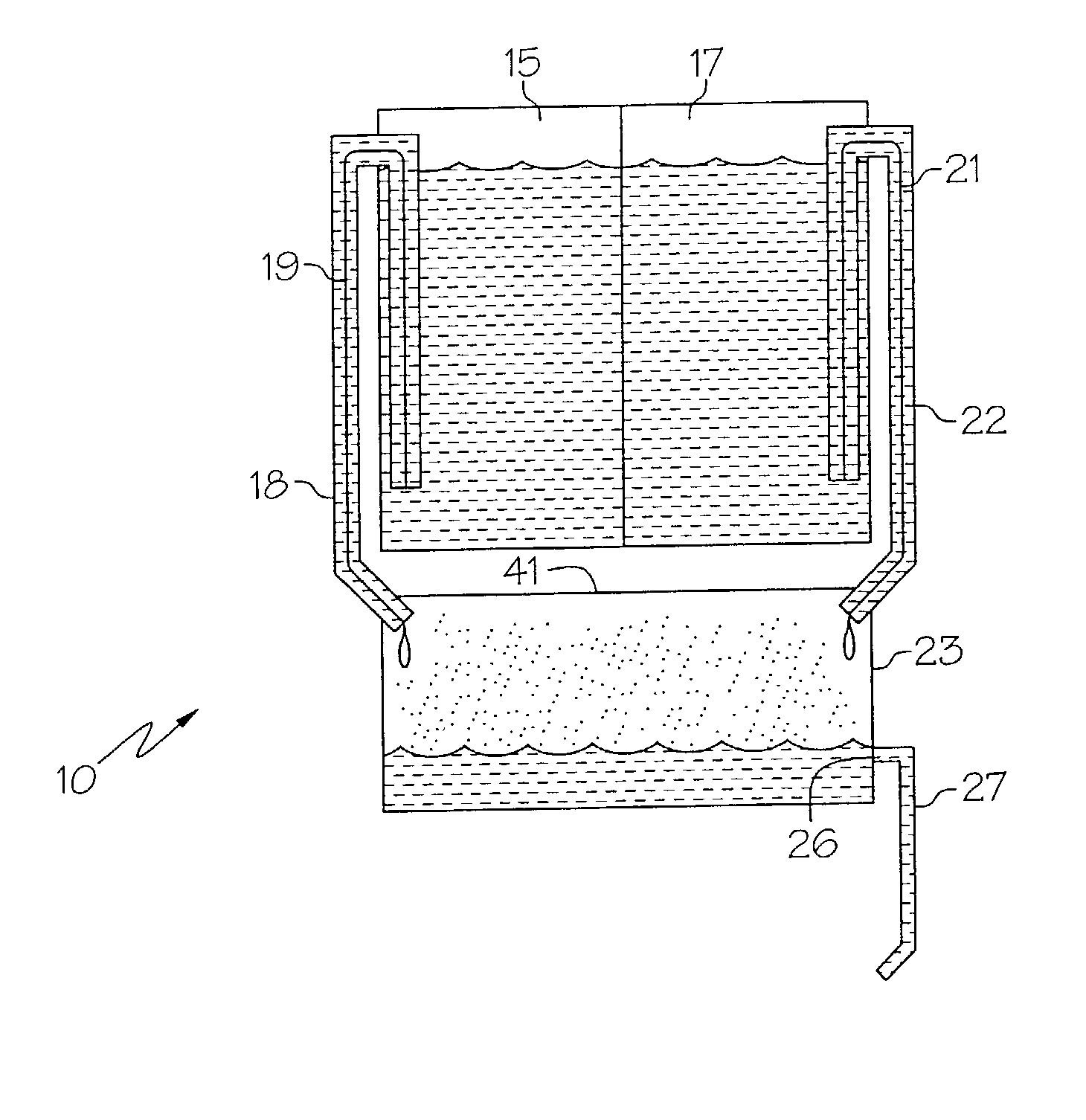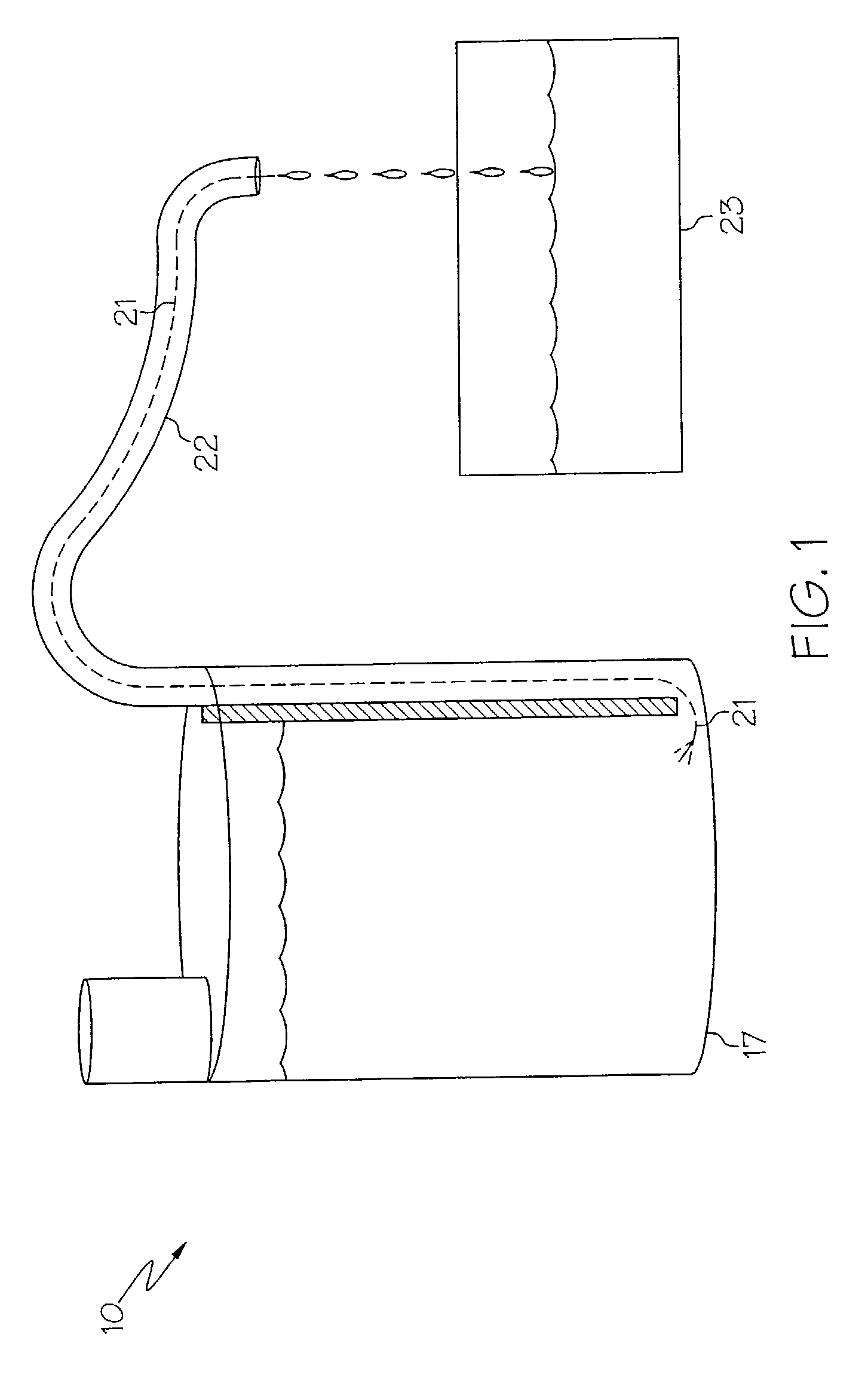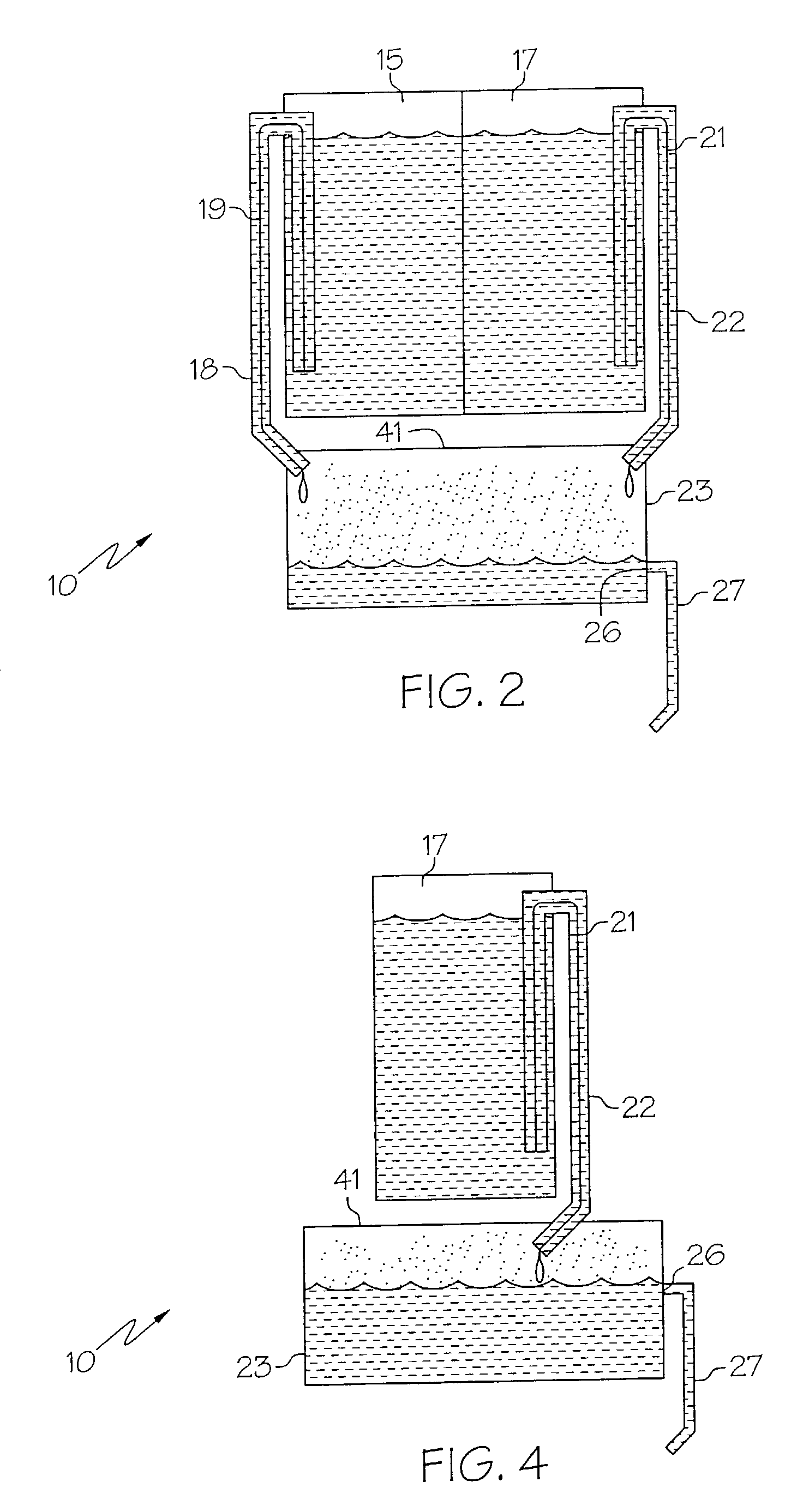Deodorizing and sanitizing employing a wicking device
a wicking device and deodorizing technology, applied in disinfection, water/sewage treatment by oxidation, chemical apparatus and processes, etc., can solve the problems of difficult cleaning and sanitizing, the use of chlorine dioxide is not manufactured and shipped under pressure, and the conventional method of on-site manufacture requires not only expensive generation equipment, but also high operator skill
- Summary
- Abstract
- Description
- Claims
- Application Information
AI Technical Summary
Benefits of technology
Problems solved by technology
Method used
Image
Examples
example 1
[0059]A device similar to that shown in FIG. 1 with an 8 oz. bottle is filled with an acidic delimer composition, LIME-A-WAY, a phosphoric acid based delimer available from Ecolab, Inc. in St. Paul, Minn. Standard cotton string having a weight of 0.13 g / foot was employed. The string was double in order to provide a dosing based on 8 oz / 30 days or 0.2667 oz / day (7.89 ml / day). The rate is equal to about 1 drop from the wick every 15 minutes. The wick was contained in ¼″ TYGON® tubing.
[0060]The bottle was placed on a balance and monitored over time. The following data was collected.
[0061]
TABLE 1TimeWeight lossg / minute43 min 1.41 g0.033 g / min56 min 1.33 g0.033 g / min18 hrs 5 min26.27 g0.024 g / min18 hrs 15 min26.54 g0.024 g / min19 hrs 40 min28.28 g0.024 g / min19 hrs 59 min28.72 g0.024 g / min21 hrs 15 min30.28 g—23 hrs 22 min32.89 g—25 hrs 6 min34.97 g—42 hrs 39 min53.21 g—
example 2
[0062]The same procedure was followed as in Example 1 with the exception that the 0.13 g / foot cotton string was not doubled in this experiment. The data found in the following Table 2 was collected. The device was found to provide about 0.05 oz / day.
[0063]It was noted that as the level of product drops in the chamber, the distance that the product needs to travel up the wick is farther and it appears to slow down the rate of dispensing.
[0064]
TABLE 2TimeWeight lossg / minute (avg wt loss) 17 hrs 12 min2.24 g 18 hrs 46 min2.41 g 20 hrs 21 min2.58 g0.0022 g / min 22 hrs 28 min2.72 g0.0021 g / min 24 hrs 12 min2.92 g0.0021 g / min 41 hrs 45 min3.83 g0.0020 g / min 43 hrs 11 min3.93 g0.0020 g / min 44 hrs 7 min4.04 g— 46 hrs 29 min4.21 g— 48 hrs 32 min4.39 g—112 hrs 31 min9.11 g—136 hrs 46 min10.01 g —143 hrs 45 min10.31 g —160 hrs 48 min10.97 g —184 hrs 38 min11.28 g —
example 3
[0065]A device according to the present invention was tested in Manitowoc Automatic Ice Making Unit. A wick feed available from Clack Corp. using a medium size candle wick of 0.313 g / foot was filled with a sodium chlorite composition at a concentration of about 6% sodium chlorite. This dispenser was found to dispense about 0.40-0.50 oz / day according to the following data.
[0066]The dispenser was installed on the top of a Manitowoc Automatic Ice Making Unit and the feed tube was fed through a hole into a 400 ml disposable beaker which was mounted on the inside wall of the ice machine. The beaker contained 50 g of LIME-A-WAY®. The liquid chlorite solution was dripped into the 400 ml beaker. The amount of chlorine dioxide was then monitored in the head space of the ice machine. The following results were obtained.
[0067]
TABLE 3TimeChlorine Dioxide in air (ppm) 8:00 am0.01 9:40 am0.5511:00 am0.8711:45 am0.38 1:05 pm0.67 2:20 pm0.61
[0068]The acid / chlorite mixture was also analyzed for chlo...
PUM
| Property | Measurement | Unit |
|---|---|---|
| gravity | aaaaa | aaaaa |
| liquid composition | aaaaa | aaaaa |
| liquid | aaaaa | aaaaa |
Abstract
Description
Claims
Application Information
 Login to View More
Login to View More - R&D
- Intellectual Property
- Life Sciences
- Materials
- Tech Scout
- Unparalleled Data Quality
- Higher Quality Content
- 60% Fewer Hallucinations
Browse by: Latest US Patents, China's latest patents, Technical Efficacy Thesaurus, Application Domain, Technology Topic, Popular Technical Reports.
© 2025 PatSnap. All rights reserved.Legal|Privacy policy|Modern Slavery Act Transparency Statement|Sitemap|About US| Contact US: help@patsnap.com



